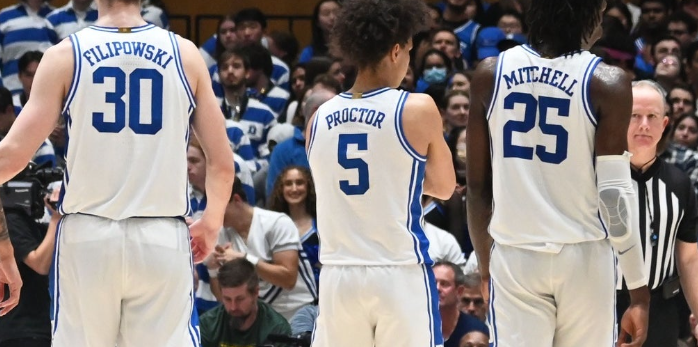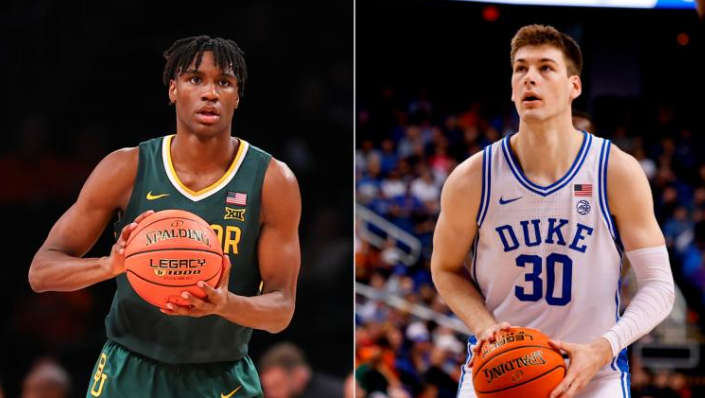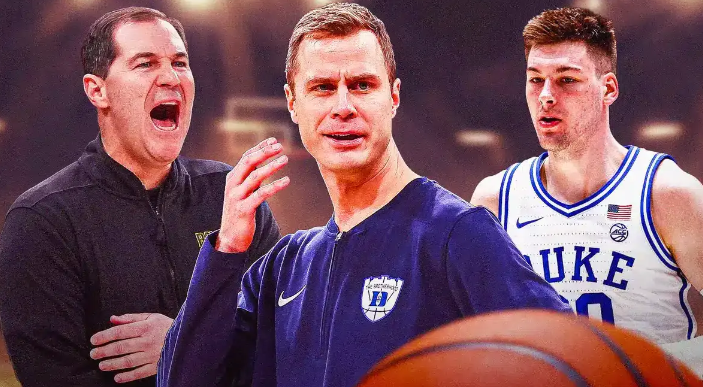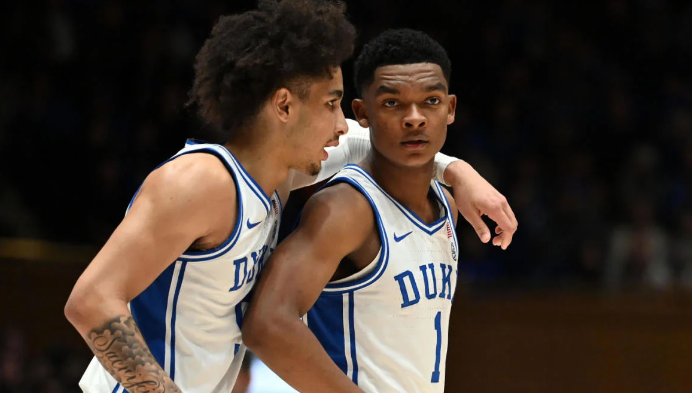Table of Contents
Duke University: A Powerhouse in 3×3 Basketball Potential
Duke University has long been a name synonymous with excellence in college basketball, and their prowess extends into the realm of 3×3 basketball. This renowned program is not only a breeding ground for NBA talent but also a hotbed for players who could make waves in the Olympic 3×3 tournaments. Duke’s approach to developing players for this high-octane format is a testament to their commitment to excellence.
Current Roster and Key Players
Duke’s roster is brimming with talent that shines on the 3×3 court. These players are not just college stars; they possess the skills and versatility required for international success. With a focus on quick decision-making, sharp shooting, and tight defense, Duke’s key players are already showing signs of greatness in the 3×3 format. Their ability to adapt to the unique demands of 3×3 basketball, which requires rapid transitions and high-intensity play, sets them apart as future Olympic contenders.
Coaching and Training Focus
The coaching staff at Duke plays a crucial role in preparing players for the rigors of 3×3 basketball. Known for their innovative strategies and intense training regimens, Duke coaches focus on developing skills that are essential for success in this format. From emphasizing fast breaks to perfecting shooting techniques, Duke’s training programs are designed to refine players’ abilities and enhance their performance on the international stage.
Notable Prospects for Olympic Gold
When it comes to Olympic potential, Duke has several standout players who are poised to make a significant impact:
- Tyrese Proctor: Known for his exceptional shooting accuracy and quick thinking on the court, Tyrese Proctor is a top prospect for Olympic 3×3 basketball. His ability to score under pressure and make decisive plays is a huge asset.
- Mark Mitchell: With a knack for defensive plays and an impressive work ethic, Mark Mitchell brings a unique skill set to the team. His tenacity and strategic mindset make him a strong candidate for Olympic competition.
- Kyle Filipowski: Combining athleticism with a sharp basketball IQ, Kyle Filipowski has shown remarkable potential in 3×3 games. His versatility and playmaking skills position him as a key player for future Olympic teams.

Duke’s emphasis on developing these players’ 3×3 skills, combined with their track record of success, makes them a leading contender for producing future Olympic champions in this thrilling format.
Baylor University: Rising Stars and Olympic Aspirations
Baylor University has been making waves in college basketball, and their impact is equally impressive in the realm of 3×3 basketball. As the game continues to gain popularity on the international stage, Baylor is emerging as a key player in developing future Olympic stars. The university’s commitment to excellence and its robust basketball program are paving the way for players who could shine in the 3×3 format and potentially bring home Olympic gold.
Current Roster and Key Players
Baylor’s basketball team is stacked with talent that is making a significant mark in 3×3 basketball. These athletes are excelling in the collegiate arena, showing off their skills in a format that demands quick thinking, agility, and precise shooting. Baylor’s players are adapting well to the unique style of 3×3 basketball, which is all about fast-paced action and strategic play. Their performances are not only impressive but also indicative of their potential for success on the Olympic stage.
Coaching and Development Programs
Baylor’s approach to coaching and player development is a major factor in their success. The coaching staff is dedicated to honing skills that are essential for 3×3 basketball. They focus on creating a training environment that emphasizes agility, shooting accuracy, and teamwork. By refining these skills, Baylor is preparing its players to excel in the high-energy world of 3×3 basketball. Their development programs are tailored to ensure that players are well-equipped to handle the demands of international competition.
Notable Prospects for Olympic Gold
Baylor has several standout players who are on the path to Olympic stardom:
- LJ Cryer: Known for his exceptional ball-handling skills and sharp shooting, LJ Cryer is a key asset for Baylor. His ability to perform under pressure and make crucial plays makes him a strong candidate for Olympic success.
- Adam Flagler: With impressive defensive capabilities and a strategic mindset, Adam Flagler brings a lot to the table. His focus on defense and ability to disrupt opponents’ plays are crucial for 3×3 basketball.
- Flo Thamba: Combining athleticism with a keen understanding of the game, Flo Thamba has shown great potential in 3×3 competitions. His versatility and ability to adapt to different playing styles make him a promising Olympic prospect.
Baylor’s emphasis on developing players for 3×3 basketball, along with their strong coaching and training programs, positions them as a significant contender in the race for Olympic success. Their players are well-prepared to make a mark on the international stage and potentially secure gold medals in the thrilling 3×3 format.
Comparative Analysis: Duke vs. Baylor
When it comes to 3×3 basketball, Duke and Baylor stand out as two of the top college teams with players who could potentially shine on the Olympic stage. Each team brings its own strengths and strategies to the table, shaping the future of 3×3 basketball with their impressive rosters and training approaches. Let’s break down how these powerhouse programs compare and what sets them apart in the race for Olympic success.

Strengths and Weaknesses in 3×3 Play
- Duke’s Approach
- Strengths: Duke’s approach to 3×3 basketball is characterized by its emphasis on speed and precision. The team’s training focuses on quick transitions, sharp shooting, and high-intensity defense. This fast-paced style plays to Duke’s strengths, particularly with players who excel in making rapid decisions and executing under pressure.
- Weaknesses: One challenge Duke faces is maintaining consistency under the intense pace of 3×3 play. While their players are skilled, the high demands of 3×3 can sometimes lead to lapses in performance, especially when facing well-coached opponents with strong tactical approaches.
- Baylor’s Approach
- Strengths: Baylor’s strengths lie in its strategic defensive play and adaptability. The team’s focus on strong defensive tactics and versatile offensive strategies gives them an edge in 3×3 basketball. Baylor’s players are known for their ability to adjust their play style according to the flow of the game, which is crucial in the unpredictable nature of 3×3 matches.
- Weaknesses: Baylor’s emphasis on defense can sometimes limit their offensive opportunities. While their defensive skills are top-notch, they occasionally struggle to translate that into consistent scoring, especially against teams with dynamic offensive play.
Potential for Olympic Success
- Duke’s Prospects: Duke’s players are well-positioned to make an impact in the Olympics due to their high skill level and ability to perform under pressure. Their emphasis on fast-paced play and precision shooting aligns well with the demands of 3×3 basketball. If Duke’s players can maintain their form and adapt to the unique challenges of international competition, they could be strong contenders for Olympic gold.
- Baylor’s Prospects: Baylor’s players have a solid chance of making a mark on the Olympic stage, thanks to their defensive prowess and strategic play. Their ability to adapt and respond to different game situations is a significant advantage in the 3×3 format. With continued development and experience, Baylor’s players could prove to be formidable opponents in the pursuit of Olympic success.
In summary, both Duke and Baylor have their own distinct advantages when it comes to 3×3 basketball. Duke excels in speed and shooting precision, while Baylor shines in defensive strategy and adaptability. As these college teams continue to develop their players, both have strong potential to contribute key athletes to the Olympic 3×3 basketball competitions.
The Path to the Olympics: Key Factors for Success
For college basketball players aiming for Olympic gold in 3×3 basketball, there are several key factors that play a crucial role in their journey from the college courts to the international stage. Understanding and addressing these elements can significantly impact their chances of success in the Olympics. Let’s explore what it takes for these athletes to reach the pinnacle of 3×3 basketball.

Player Development and Training
- Training Regimens: To excel in 3×3 basketball, players need specialized training that focuses on the unique demands of the game. Unlike traditional basketball, 3×3 involves a fast pace and high intensity, requiring players to be agile, quick, and strategically sharp. Training regimens for 3×3 basketball typically include drills that enhance speed, endurance, and skill execution under pressure. This rigorous preparation helps players adapt to the rapid transitions and physical demands of 3×3 play.
- Skill Development: In addition to physical conditioning, developing specific skills is crucial for success in 3×3 basketball. Key skills include shooting accuracy, ball-handling, and defensive techniques. Players need to master these skills to perform effectively in the high-pressure environment of international competitions. Coaches focus on refining these abilities through targeted drills and gameplay scenarios that simulate the conditions of 3×3 matches.
Exposure and Experience
- International Competitions: Competing in international tournaments is essential for gaining experience and honing skills in 3×3 basketball. These events provide valuable opportunities for players to test their abilities against top global competitors and adapt to different playing styles. Experience in international settings helps players understand the nuances of 3×3 basketball and prepares them for the intensity of Olympic competition.
- College vs. Professional Experience: While college basketball provides a solid foundation, transitioning to the professional and Olympic levels involves additional challenges. Professional experience and participation in international leagues can offer players a deeper




